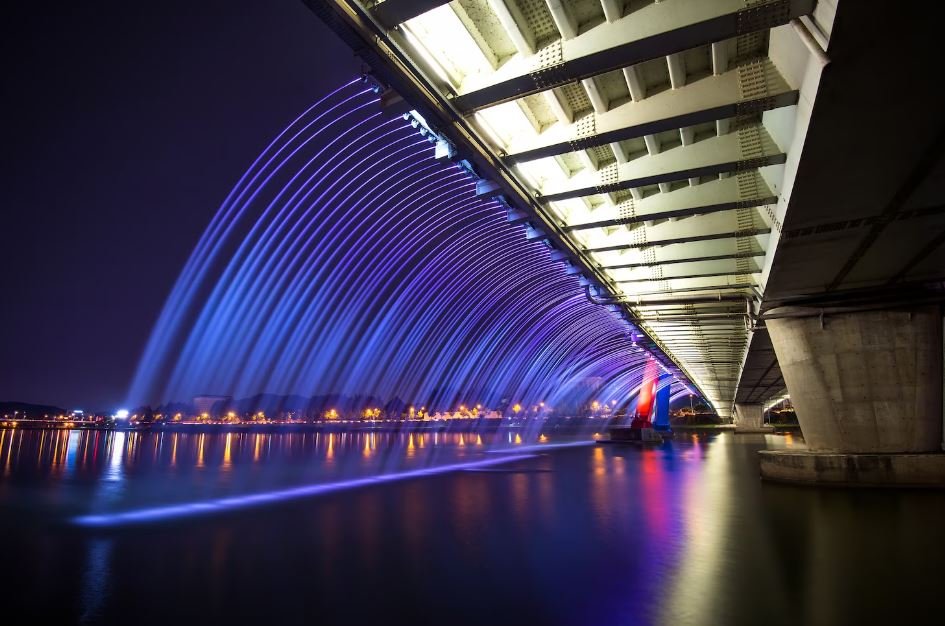
The most complex areas of architecture have been subtly invaded by generative AI, which is revolutionizing the design, testing, and construction of skyscrapers and bridges. It now does more than just help engineers; in a matter of hours, it produces hundreds of structural options that satisfy sustainability, safety, and aesthetic requirements. Before the first beam is even ordered, the technology is remarkably effective at analyzing thousands of scenarios that balance environmental impact, cost, and material strength.
AI uses sophisticated algorithms to enhance human creativity rather than merely automate tasks. The way evolution optimizes nature is remarkably similar to this process. Artificial intelligence (AI) develops designs based on limitations like wind load, soil stability, or seismic activity, much like coral reefs or tree branches adapt through infinite variation. Today, architects curate the most promising results from a digital swarm of design possibilities, guiding rather than drafting.
| Aspect | Information |
|---|---|
| Core Technology | Generative Artificial Intelligence (AI) |
| Primary Purpose | Automating, simulating, and optimizing bridge and skyscraper designs |
| Key Applications | Structure optimization, geotechnical prediction, sustainability modeling |
| Major Platforms | Autodesk Forma, Digital Blue Foam, ALLPLAN Gen-AI, Tribe AI Construction Suite |
| Main Advantages | Faster design, material efficiency, improved safety, and sustainability |
| Industry Shift | From manual design to AI-curated creative collaboration |
| Prominent Adopters | Zaha Hadid Architects, STRABAG SE, WSP, and Sidewalk Labs |
| Reference | Forbes – How Generative AI Will Change Architecture |
Known for their futuristic designs, Zaha Hadid Architects was one of the first to use AI-powered tools to improve building shapes for sustainability and aesthetics. In order to create the flowing, dune-like shape of their Bee’ah Headquarters in the United Arab Emirates, generative software used wind and sunlight data, which resulted in a nearly one-third reduction in energy consumption. It demonstrates how design and data can come together to create something that seems almost natural.
Similar advances have been made in bridge engineering. Recently, engineers in Pennsylvania redesigned a bridge’s concrete blocks using generative AI, reducing material consumption by 20% without compromising strength. The system developed models that could withstand more severe weather conditions at a lower cost by analyzing decades’ worth of structural data, environmental records, and historical failures. This level of accuracy wasn’t just practical; it was revolutionary.
Engineers used generative simulations to optimize the Shanghai Tower’s twisted shape, which resulted in a 24% reduction in wind pressure. That one change increased stability while saving thousands of tons of concrete and steel. The outcome demonstrated that AI can create taller and greener buildings, making it not only an architectural success but also a sustainability milestone.
The speed and accuracy of AI are its main advantages. Hours can now accomplish tasks that previously required months of modeling and manual testing. Engineers can instantly generate hundreds of design options by entering project parameters like height, budget, soil type, and seismic risks into programs like Autodesk Forma and ALLPLAN Gen-AI. Performance and efficiency tests are then conducted virtually on each version. Workflows that were previously linear are transformed into dynamic loops of discovery by this highly effective iterative process.
Geotechnical analysis is another area where machine learning excels. AI can forecast how foundations will respond to stress by analyzing data from geological surveys, satellites, and soil sensors. The necessity of physical testing and on-site drilling is greatly diminished by these revelations. Faster approvals, reduced expenses, and safer designs are the outcomes—achievements that are rarely possible at this scale using traditional engineering methods.
The incorporation of AI-driven project management tools has significantly enhanced the construction sector. For example, algorithms assisted in coordinating equipment, labor, and materials with real-time weather information during the Central 70 reconstruction in Denver. To avoid waste and lower safety risks, the system automatically rescheduled tasks as storms approached. Businesses have saved millions of dollars by avoiding downtime thanks to predictive scheduling.
Additionally, generative AI gives sustainability initiatives a new level of accuracy. Urban planners now work with Sidewalk Labs to model the behavior of energy, sunlight, and airflow around proposed skyscrapers. Before construction starts, these simulations determine which shapes use the least amount of energy. AI can suggest materials for bridges that have lower carbon footprints, lessening their impact on the environment without sacrificing their durability.
Singapore offers a remarkable illustration of this innovation, as embedded sensors are used by AI-powered systems to monitor the structural health of the city-state. The system instantly notifies engineers when strain levels or vibrations surpass safe thresholds. Real-time monitoring of this type has shown itself to be incredibly dependable, averting possible malfunctions long before they happen. It serves as a reminder that AI is protecting structures in addition to creating them.
Additionally, digital twin technology has become more popular. Today, engineers build virtual versions of entire bridges and skyscrapers that are updated in real time. These twins identified unequal load distributions across precast segments during the Venetian Causeway project in Miami, enabling teams to promptly modify construction techniques. These early interventions show how predictive intelligence can improve efficiency and safety at the same time.
However, the story of AI’s ascent in architecture is one of cooperation rather than replacement. Architects and engineers continue to be at the forefront of creativity, establishing the function, feeling, and character of a building. Simply put, generative AI broadens their scope by providing alternatives that human intuition might miss. “Designers no longer sketch every line—they design the intelligence that creates the lines,” as architect Bernard Marr noted in Forbes. The cultural shift is encapsulated in that observation: creativity is now orchestrated rather than repeated.
AI redefines aesthetic philosophy in addition to its technical potential. Certain AI-generated bridge concepts are sinewy and elegant, yet precisely tailored for stress distribution, just like biological structures. These designs blur the line between engineering and art because they are influenced by natural logic. Architecture that is responsive, fluid, and harmoniously efficient is the end result.
In terms of the economy, the advantages are difficult to overlook. AI-assisted designs can cut construction costs by up to 25% and project timelines by 30%, according to WSP studies. By bringing infrastructure projects into line with international carbon reduction initiatives, the decreased material waste alone significantly advances sustainability goals. In many respects, artificial intelligence is a strategic asset for environmental advancement rather than merely an engineering tool.
Culturally speaking, this technological advancement is a reflection of a larger human narrative: our ongoing quest to improve the way we construct and live. Generative AI democratizes innovation in addition to speeding up design. By using AI tools that provide the same processing power previously only available to top studios, small businesses can now compete with the industry’s titans. Urban development may change as a result of this equalizing effect, enabling regional architects to create more intelligent and environmentally friendly buildings.
